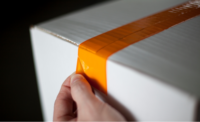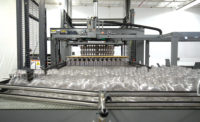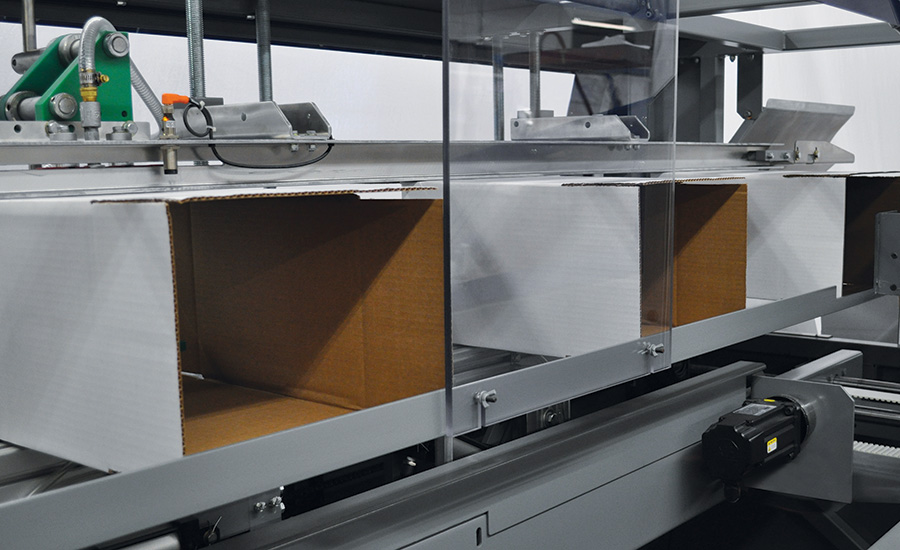Machinery
A Simple Case for Erecting and Sealing
Four factors to ensure a good return on your investment.










In a perfect world, delivering square and sealed cases to the packaging line would be a simple and repeatable process. But in the real world, there are many variables with the potential to cause unplanned downtime, lost production or damaged product. We’ve identified four areas that, properly addressed, can keep your packaging line operating at capacity and maximize the return on your machinery investment.
1) Corrugated
The first is corrugated. Although corrugated suppliers work to produce top quality product, off-spec board is a reality. Common defects include misaligned slots, poor score lines, or incorrect or over-glued manufacturer’s joints. Variations in liner board also occur, as all major corrugators inter-ship liner board to conserve freight costs. As a result, cases from a single supplier may have a wide range of porosity, which can affect performance. Another factor is recycled corrugated; a win for sustainability, yet it is important to plan for the effects it may have on your production. Finally, your plant temperature, humidity and warehousing conditions can all affect your corrugated performance.
How do you prevent these issues from causing misfed KDs, machine jams and unsquare cases? Talk to your suppliers to fully understand what is coming in your back door. Documenting issues will help in resolving them. If you are transitioning to recycled board, plan ahead. Talk to your corrugated and adhesive/tape suppliers about any recommended changes in equipment settings. All adhesive and tape suppliers have products specifically designed for recycled board, so run some tests to find the best for your board and equipment.
A final consideration is making sure your case erectors and sealers can overcome common obstacles and keep on running. For case erectors, a KD feed that contacts the case at multiple locations is typically best at indexing warped and band-marked cases. KD stack and feed style is another issue. Vertical magazines require back pressure to hold the stack in place, which can cause misfeeding of cases affected by humidity. Horizontal magazines typically index cases from the top of the stack, eliminating back pressure requirements. Machines with squaring mechanisms can form square cases from off-spec board.
2) Machine Specs
The second factor is your machine specs. In purchasing a new machine, the first step should be a realistic evaluation of your speed requirements. An over-spec machine can increase your cost with features you don’t need, while a machine pushing to meet line speed requirements is more susceptible to failure. It’s good practice to purchase a machine at 10-15% higher CPM than your line speed to give you a cushion for unplanned production events. Add any near-future speed projections to this number.
Another consideration is your sealing method, which will affect your cost of production. Here is a comparison:

Buying a standard model can also conserve capital. Most erectors and sealers run a wide case range, but if your specs are outside the norm, make sure the machines you consider will run your cases. Custom engineering will cost more, so better that your specs fit the machine, not vice versa. Finally, reducing human intervention is the key to maintaining your costs. A case erector with a large capacity magazine will require fewer refills per shift. A low-case warning can prevent case runout and loss of production. If you seal with tape, look for erectors and sealers with quick-change tape heads.
3) Plant Operation
Your plant operation is the third factor. While downtime is necessary for changeover and maintenance of any machine, there are ways to manage these activities and their related costs. Look for no-tools changeovers to speed up your case changes. Adjusting mechanisms with position indicators can ensure precise adjustments and minimize tweaking. If your line will require frequent changes, it may be cost-effective to buy an automatic changeover option with motorized adjustment to the new case size. It’s also important to make changeover training a priority. The simplest task is difficult without understanding. Train your plant personnel and everyone will benefit.
To minimize maintenance and parts expenditures, buy a machine built for your requirements. Slow speed lines put less stress on operating mechanisms so typically low volume erectors and sealers are built with lighter gauge steel and operating mechanisms. These features keep your costs low and are well-suited for conservative line speeds. As you go from midrange to high-speed lines, the machine structure and technology will increase incrementally along with the cost. In evaluating machines, make sure the construction and components are rated for your true requirements and you will optimize your maintenance expenditures.
Understand maintenance expectations. Your equipment will require maintenance at some point, but better to know how often before you buy. Talk to suppliers about their recommended maintenance schedules. Ensure that maintenance information will be readily available in a format that suits your needs, whether electronic, print, or both. Look for reduced maintenance features such as lube banks or auto lube systems, which can save significant time and money over the long term.
4) Hidden Costs
The last factor is hidden costs, caused by either an unexpected situation or a chronic issue that plagues your production line every day. Avoiding these problems will save you time, money, and headaches. First, it’s important to understand the costs of unsquare cases. While poor cases may not shut down your line, their effects can cause issues from packer to palletizer. Unsquare cases lack the stacking strength of correctly formed cases, and unstable pallets can compromise your product safety.
Know the real consequences of case erector and case sealer failure. Jams are the most common cause and can bring your production to a standstill without notice. Through the case erecting and sealing processes, there are many points where the case can jam, so it is important to keep cases under full control from infeed through sealing and compression. There are several methods to control the case and some work more reliably than others. Discuss this with your prospective suppliers; ask for user data, plan to see the machine in operation, and run a test with your cases. Taking these steps will ensure that you get the operation you expect at your line speeds and ensure the future success of your line.
Understand the costs of poor or no training. As your erector and sealer are likely the simplest machines on your line, machine training may not be a priority. Yet we find that many operating issues stem from improper setup or adjustment, improper maintenance or sealing system issues. Use your OEM’s resources to make sure your people are well trained, and it will pay many dividends over the life of your machine.
Realize the true cost to maximize the return on your machinery investment — what your equipment costs goes beyond the purchase price. Factor in output yield, uptime (run ready), parts and maintenance (type and frequency) to calculate your real cost. This is Cost of Ownership: your actual out-of-pocket costs over the life of the machine. This evaluation will help you determine if a low cost machine actually has a higher cost aside from the purchase price. Taking the time to analyze your needs and specify case erecting and sealing equipment that suits your requirements can pay multiple dividends: machinery that supplies a good return on your investment and reliable service on your packaging line for years to come.
A-B-C Packaging (Tarpon Springs, Florida) is a packaging supplier of case erectors, case packers, case sealers, palletizers, bulk depalletizers, partition openers, decasers and specialty equipment. Visit abcpackaging.com.
Looking for a reprint of this article?
From high-res PDFs to custom plaques, order your copy today!











